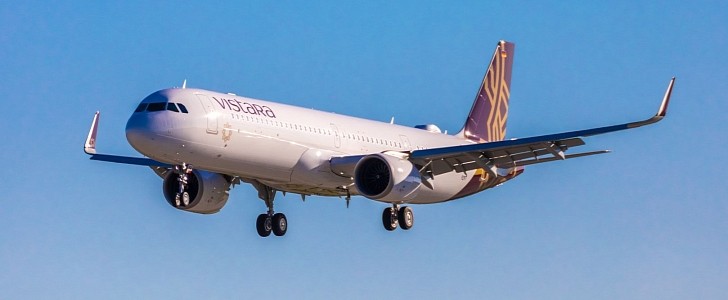Volkswagen’s Dieselgate scandal has changed a lot in the automotive world, but as it turns out, carmakers were not the only ones that had a lot to learn following the German conglomerate's manipulation of emission control systems.
MIT engineers who’ve analyzed the way the carmaker implemented its emissions cheat figured out that the way diesel engines control emissions could be used for airplanes too, all with the purpose of reducing NOx output by as much as 95 percent.
While we’re still far from the moment an all-electric aircraft would get to see the daylight, engineers have created a semi-electrified concept whose purpose is to substantially reduce air pollution, all with the goal of paving the way for a future where flying with zero impact would totally be possible.
To do this, Steven Barrett, professor of aeronautics and astronautics at MIT, has come up with a design that relies on a hybrid-electric system comprising a gas turbine, an electric generator, and an emissions control system, which would be installed in the cargo hold, away from the thrust-producing propellers.
The professor says a gas turbine can power the electric generator, which in its turn can power the propellers. Given that the entire system is installed in the cargo hold, engineers can control the direction of the exhaust and send it right into the emission control system, which would block the NOx and then release clean air.
At first glance, this is an approach that could work, MIT says, and Barrett explains in a paper that such a system would only require some 0.6 percent more fuel because of the added weight. It can totally be installed on a Boeing 737 or an Airbus A320, he says, and the pollution would be reduced by as much as 95 percent.
“This would be many, many times more feasible than what has been proposed for all-electric aircraft,” Barrett says. “This design would add some hundreds of kilograms to a plane, as opposed to adding many tons of batteries, which would be over a magnitude of extra weight.”
The entire project is detailed in the Energy and Environmental Science journal, where the team of engineers who created the design explains all challenges such a system would face.
While we’re still far from the moment an all-electric aircraft would get to see the daylight, engineers have created a semi-electrified concept whose purpose is to substantially reduce air pollution, all with the goal of paving the way for a future where flying with zero impact would totally be possible.
To do this, Steven Barrett, professor of aeronautics and astronautics at MIT, has come up with a design that relies on a hybrid-electric system comprising a gas turbine, an electric generator, and an emissions control system, which would be installed in the cargo hold, away from the thrust-producing propellers.
The professor says a gas turbine can power the electric generator, which in its turn can power the propellers. Given that the entire system is installed in the cargo hold, engineers can control the direction of the exhaust and send it right into the emission control system, which would block the NOx and then release clean air.
At first glance, this is an approach that could work, MIT says, and Barrett explains in a paper that such a system would only require some 0.6 percent more fuel because of the added weight. It can totally be installed on a Boeing 737 or an Airbus A320, he says, and the pollution would be reduced by as much as 95 percent.
“This would be many, many times more feasible than what has been proposed for all-electric aircraft,” Barrett says. “This design would add some hundreds of kilograms to a plane, as opposed to adding many tons of batteries, which would be over a magnitude of extra weight.”
The entire project is detailed in the Energy and Environmental Science journal, where the team of engineers who created the design explains all challenges such a system would face.

